Last Updated on: February 5, 2025
“What is that?” – When you install bird feeders, you will ask this question often. And the only way to answer it correctly is to learn about Pennsylvania birds common in backyards.
That’s why…
We want to start you off with a list of over 28 common backyard birds likely to pop in for some suet, sunflower, or nesting space in your birdhouse.
We will mention their favorite foods and behavior on your lawn because some birds, such as blue jays, intimidate small birds. Ready to discover the species that come to your property often? Let us do this!
Birds In Pennsylvania: Over 28 Bird Species That Love Bird Feeders
Some backyard birds in Pennsylvania visit your lawn throughout the year. Other birds visit in summer, and a few species come in winter. Let us learn more about them below.
1. Northern Cardinal
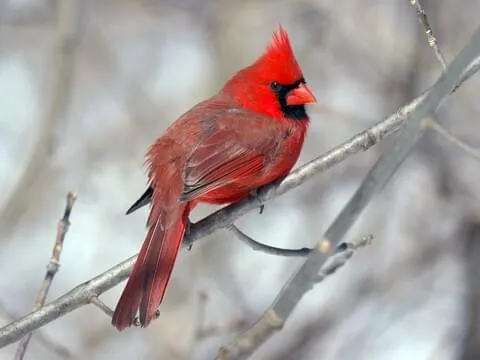
To start us off is the most common bird in Pennsylvania backyards, the northern cardinal.
This adorable groundhopper has a stunning red crest and a black mask. Even the female bird is picture-perfect though it has a brown color pattern instead of the bright red like the male bird.
When you see northern cardinals perched on a post in your backyard, you can estimate their size, which will fall between 8.3 and 9.1 inches long.
The northern cardinal picks up fallen seeds; however, it can also eat from a tray or platform feeder. More cardinals will visit your backyard when you offer black oil sunflower seeds, berries, and nuts.
2. Blue Jay
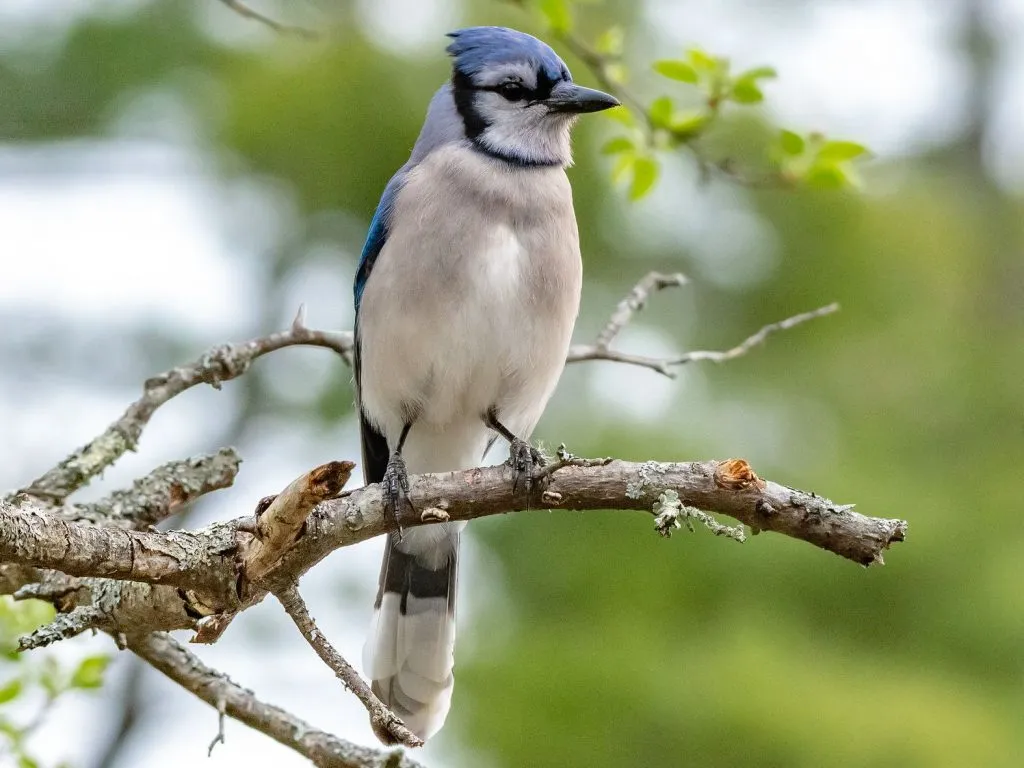
This eastern bird wins the hearts of many bird lovers because of its colorful blue upperparts contrasting a black necklace and white belly.
It is almost the same size as a robin because its length from bill to tail averages 9.8 to 11.8 inches. The blue jay is a regular backyard visitor, although it is better to keep it away from your smaller species because the blue jay is aggressive.
Additionally, these Pennsylvania birds are noisy and travel in large groups, so they may flock to your backyard if you have oak trees because they love acorns. Jays also eat eggs and nestlings.
If that does not bother you, then invite more jays by offering insects, nuts, and seeds. Blue Jays inhabit Pennsylvania all year round, with more chances of spotting them in summer.
3. Baltimore Oriole

You have to see this avian to take in its stunning color pattern. Adult Baltimore orioles have bright orange bodies and black wings with white bars. The females have a dull yellow and brown plumage that does not stand out as that of male birds.
Top on the list of foods that will bring these beautiful birds to your backyard are fruits like oranges, cherries, and bananas.
Unfortunately, their love for such foods means they can destroy your crops if you have a garden.
Hence, it is a tricky balance between preventing them from coming to your garden and inviting them because they eat pests like spiders, snails, crickets, beetles, and grasshoppers.
They come to Pennsylvania during the breeding season as their breeding range is the eastern and central regions of North America. They then fly to their wintering grounds in Florida, the Caribbean, and parts of Central America.
4. American Robin

These Pennsylvania birds are in the state throughout the year because the American robin inhabits almost all of North America, with its breeding grounds in Canada and the northernmost regions of North America and the wintering grounds in Florida, Texas, and parts of California.
Most bird-watching journals use the body length of American robins as the comparison size to compare large and medium-sized birds because this species averages 7.9 to 11 inches long from bill to tail.
You can tell an American robin by its reddish underbelly and dark back. It also has a yellowish bill and dark legs. When it comes to your lawn, a robin will be looking for earthworms. Therefore, you can offer some mealworms.
5. Cedar Waxwing
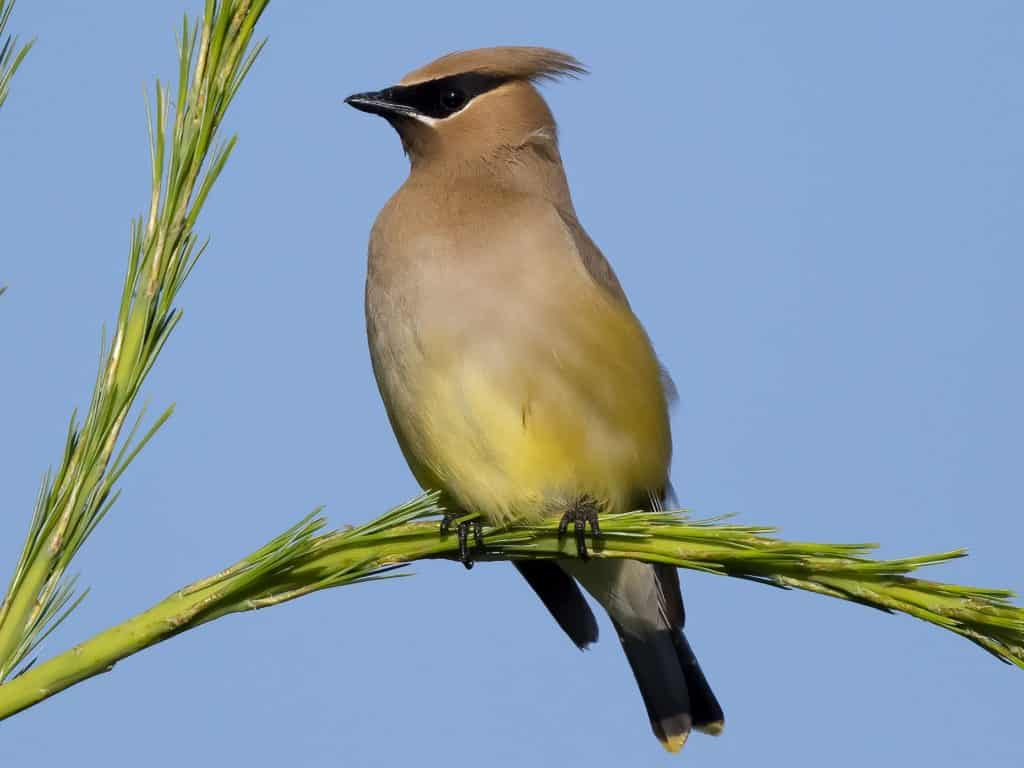
A cedar waxwing has a stunning crest contrasting its black mask. It also has a yellowish belly and red wing tips. A cedar waxwing is a small bird compared to the species above because it measures 5.5 to 6.7 inches long.
Cedar waxwings live in the northern states, and the birds in Canada migrate south to winter in the southern states. To attract cedar waxwings to your bird feeding station, you can plant native trees like hawthorn or dogwood. Additionally, you can offer some fruits on a platform feeder.
6. Mourning Dove
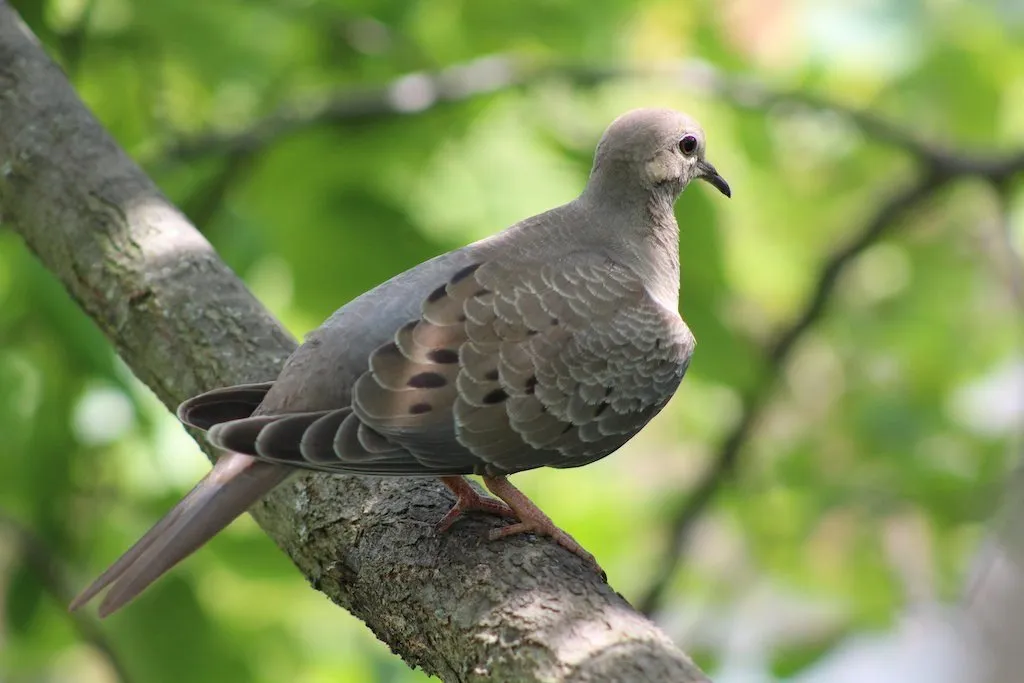
There are hardly any parts of North America without this species because its resident population is in all states of the U.S. and parts of Canada. The breeding range is in the northernmost regions, while California, Texas, and other southern states host winter birds.
Mourning doves love millet, cracked corn, safflower, and shelled sunflower seeds. They eat from the ground if a bird feeder is not available. These plump avians have soft gray feathers, black spots on the wings, and a visibly long tail.
Other conspicuous features are pinkish legs and a black bill. When you look closer, you realize they have blue eye-rings.
7. Indigo Bunting
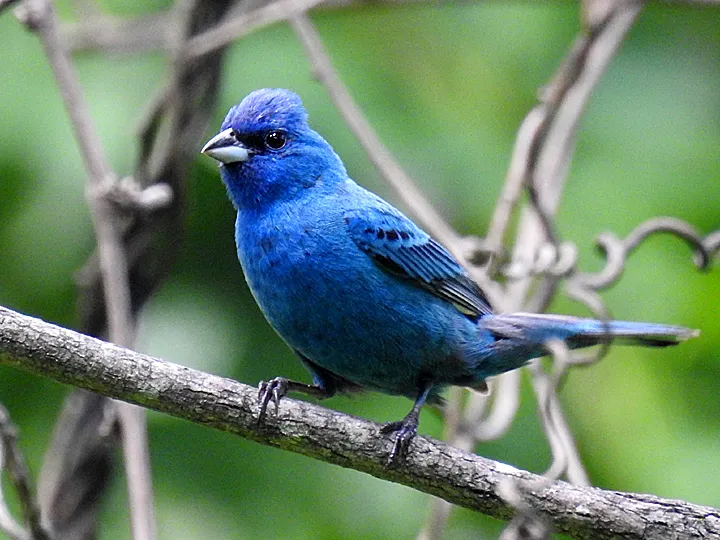
This small bright blue bird is about 4.7 to 5.1 inches long. You can tell the difference between the sexes by their plumage because a male appears bright blue with black streaks on its wings and tail while a female has brown feathers.
The indigo bunting is a migratory bird that inhabits North America during the breeding season and migrates to Central and South America in winter. Therefore, even the birds in Pennsylvania are breeding birds.
The best backyard food for them is thistle and nyjer. You can attract buntings with mealworms since they also eat insects.
8. Northern Mockingbird
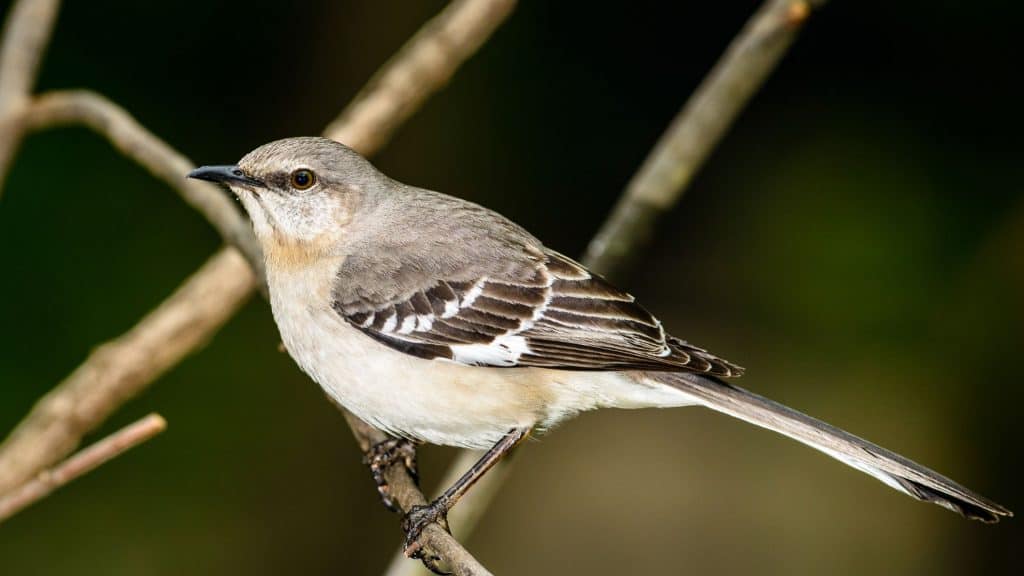
It is as common in North America as the hairy and downy woodpeckers, although some birds winter in Mexico. The northern mockingbird is about the size of an American robin because it is between 8.3 and 10.2 inches long.
These mockingbirds have darker gray-brown feathers on the back and pale ones on the belly. The white bars on their wings are only visible when they fly and have a small head and a long tail.
Bird feeders may not encourage them to come to your backyard, but you can use fruit trees like mulberries and blackberries.
9. Song Sparrow
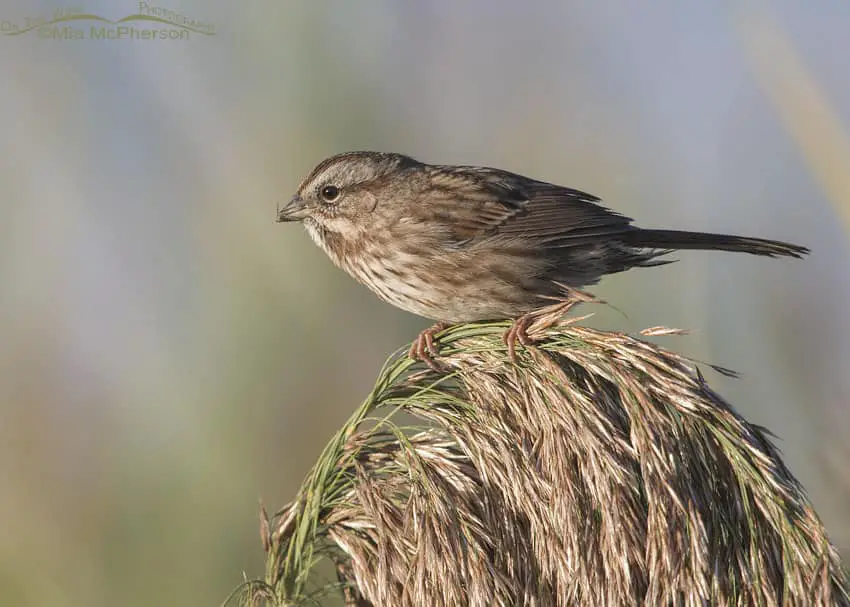
Song sparrows are small birds between 4.7 to 6.7 inches long. Their brown-streaked bodies may not stand out like the bright plumage of other birds, but they are still lovely species to have on your lawn.
They are not picky eaters because you can attract them with earthworms, seeds, or grains like rice and wheat.
10. Barn Swallow
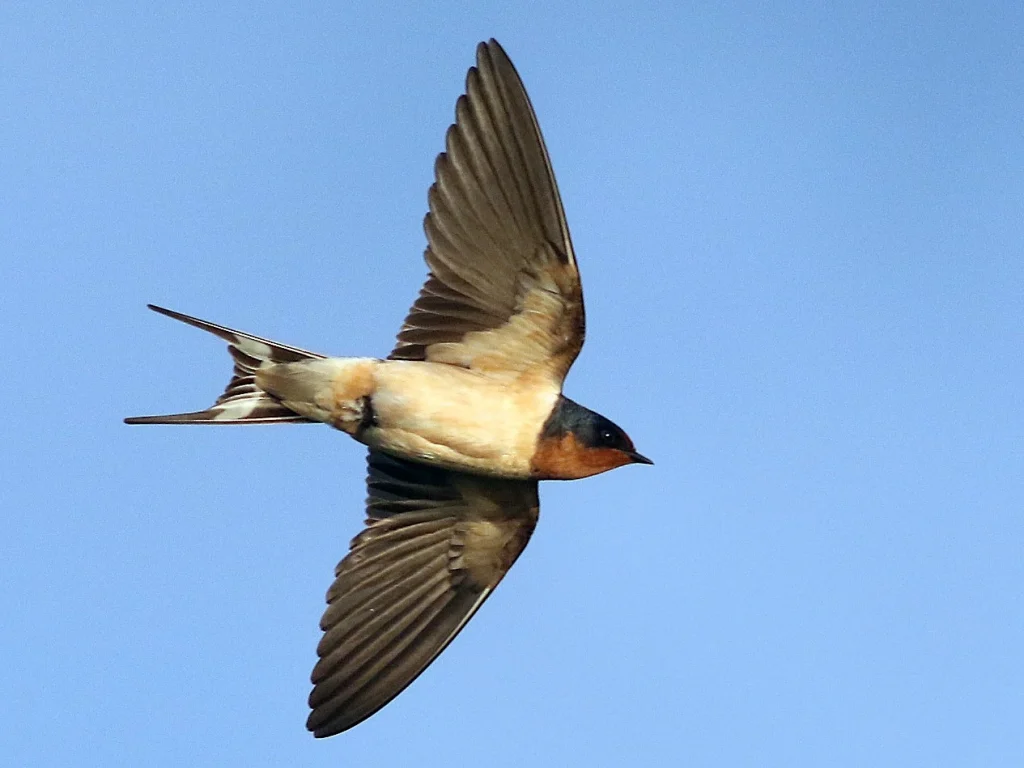
This bird is between 5.9 and 7.5 inches long. Its back is deep-blue, and its underside is reddish-brown.
Pennsylvania hosts breeding birds from around April to October. You will attract barn swallows if you have a farm or a field because they love insects. Additionally, since they build mud nests in barns, install nest boxes. You can also scatter eggshells on a platform feeder.
11. House Finch
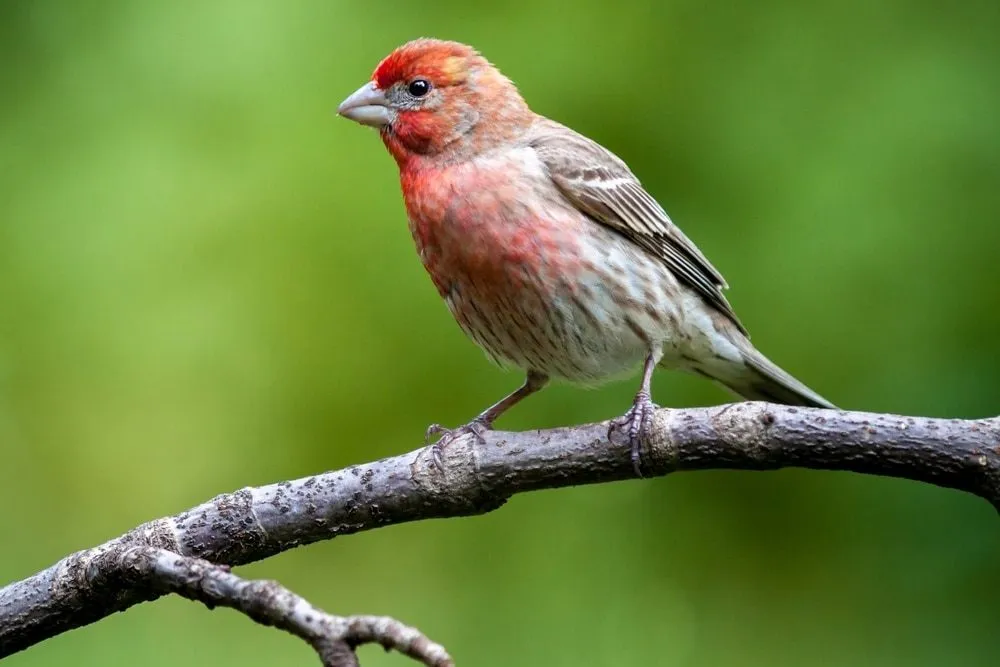
The house finch is non-migratory, so the birds in Pennsylvania are there throughout the year. It was in the western states initially, but this invasive species spread out in the U.S except in the central states and became one of the most common birds.
The first thing you notice when you see a pair of finches is their plumage differences, as the female has brown streaks only while a male house finch has a reddish head and breast.
Lastly, attract more house finches to your backyard using black oil sunflower and nyjer seeds if their noise does not bother you.
12. Dark-eyed Junco
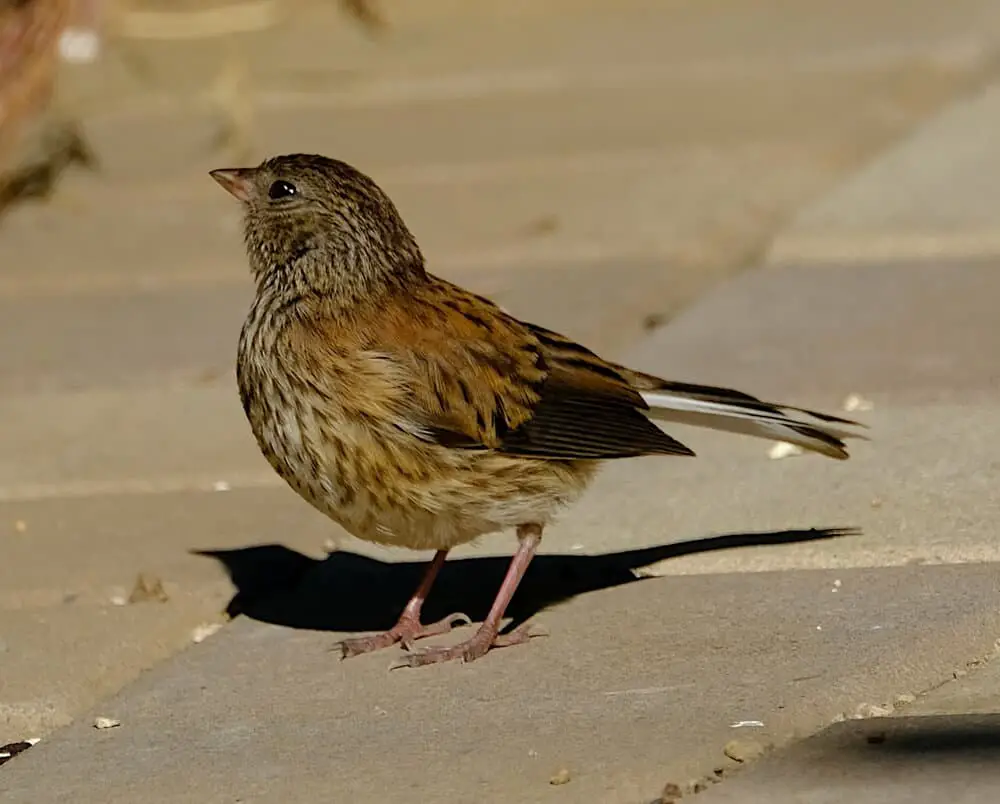
It almost looks like a black-capped chickadee but without a black cap. The eastern dark-eyed juncos have slate-colored plumage, whereas the ones in the west have a combination of black, white, and brown feathers. Part of Pennsylvania is in the wintering range, while the northern region hosts the resident birds.
A dark-eyed junco measures 5.5 to 6.3 inches long, a few inches longer than a chipping sparrow. When this species is not exploring mixed-coniferous forests, it hangs around bird feeders for millet and sunflower seeds.
13. American Goldfinch
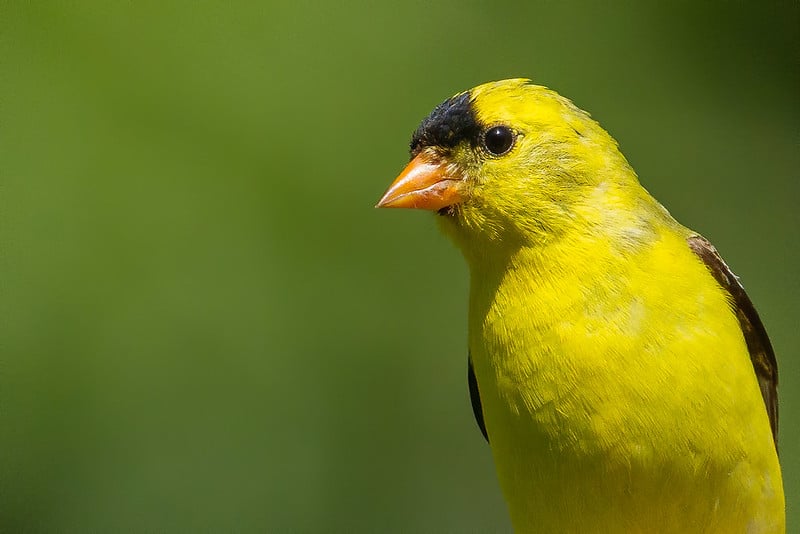
This tiny bird is under 5.1 inches long and loves sunflower, grass, and aster seeds.
American goldfinches inhabit Pennsylvania all year, although you will spot more birds when the breeding season starts around April.
These beautiful birds have bright yellow bodies and white wing bars on their black wings. Their colors change in winter when the male birds molt. Therefore, the ones you see in winter have a pale brown-olive body.
14. Eastern Bluebird
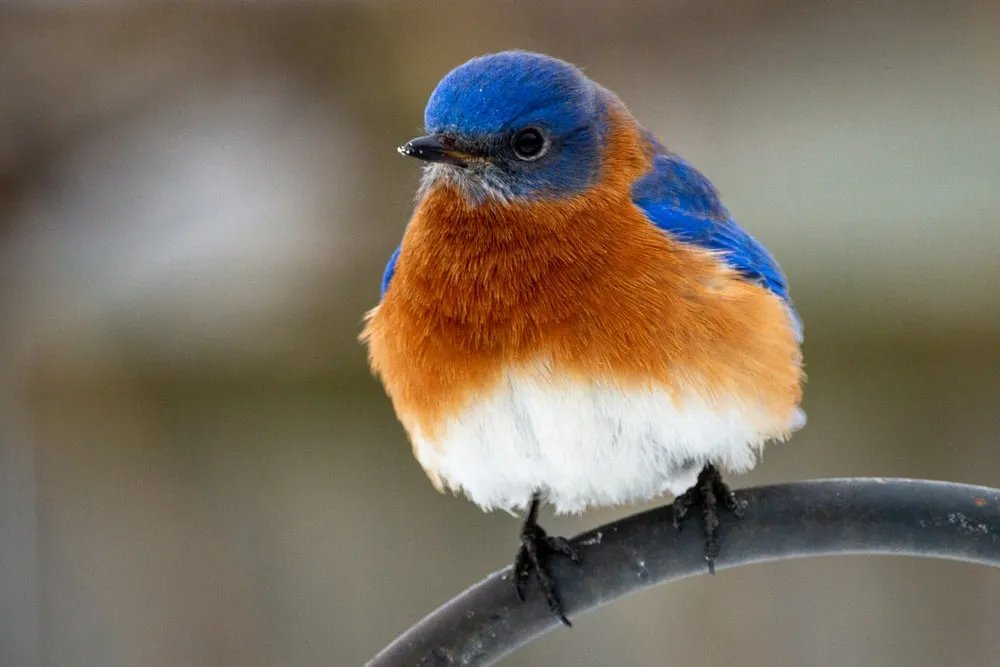
You will love watching these eastern bluebirds. Their breeding range is in Canada, but if you are lucky to see breeding pairs in your backyard, put up a nest box for them.
The eastern bluebird is a species you will see all year round, so watch out for a bird with a blue back and reddish underbelly whenever there is a myriad of avians on your lawn. The female eastern bluebird has a gray back with some blue tinges on its wings and tail.
This species is between 6.3 and 8.3 inches long. In addition to using a nest box, an eastern bluebird may also come to your lawn for mealworms.
15. Tufted Titmouse
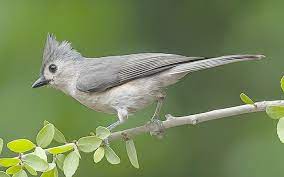
These Pennsylvania birds will have you staring at their gray crests whenever they come to your lawn. Other body features include a white underbelly, peach flanks, and dark eyes.
Tufted titmice are only in the eastern half of the United States; therefore, drawing them to your backyard lets you see them closely.
It might not happen overnight because they are shy birds that carry seeds from a feeder to enjoy away from all the attention from humans or other birds. Fill your bird feeder with peanuts, sunflower, or suet, and watch a tufted titmouse sneak in and carry away seeds.
16. Downy Woodpecker
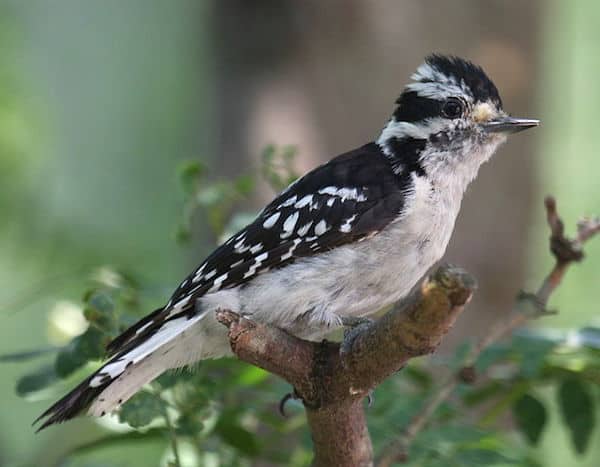
Downy woodpeckers visit backyards across North America, except in parts of the southern states like California, Arizona, and Texas. They inhabit Pennsylvania all year round in large flocks for better protection from predators.
It eats millet, peanuts, and black oil sunflower seeds.
A downy woodpecker is about half the size of a robin. It has white and black stripes on its face, spotted wings, a red patch on its nape, and white spots on the outer tail feathers.
17. Carolina Chickadee
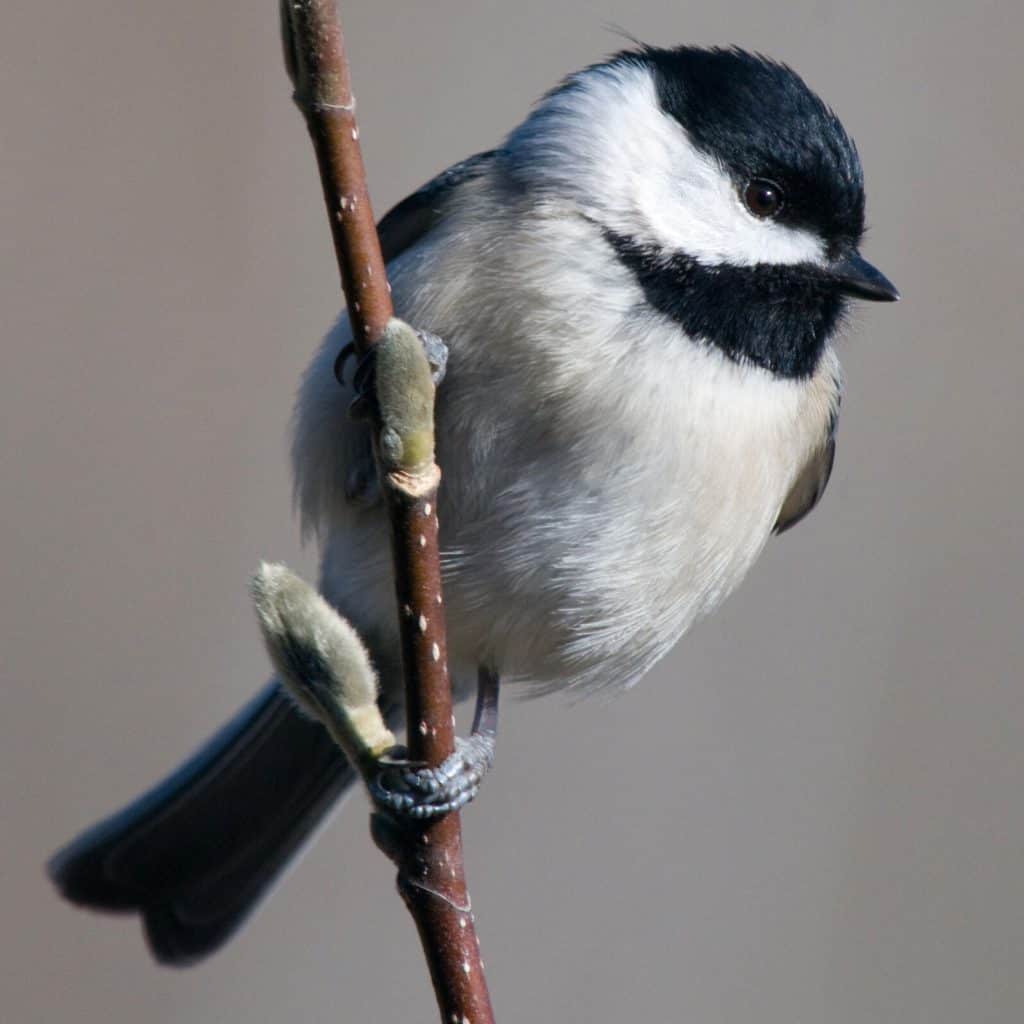
It is a resident species in Pennsylvania and one of the smallest species on this list, as its body length is between 3.9 and 4.7 inches. This chickadee eats peanuts, suet, and black oil sunflower seeds.
Its color pattern resembles a black-capped chickadee because of its black cap, white underbelly, and soft gray back. Sometimes, the two species interbreed.
18. Gray Catbird
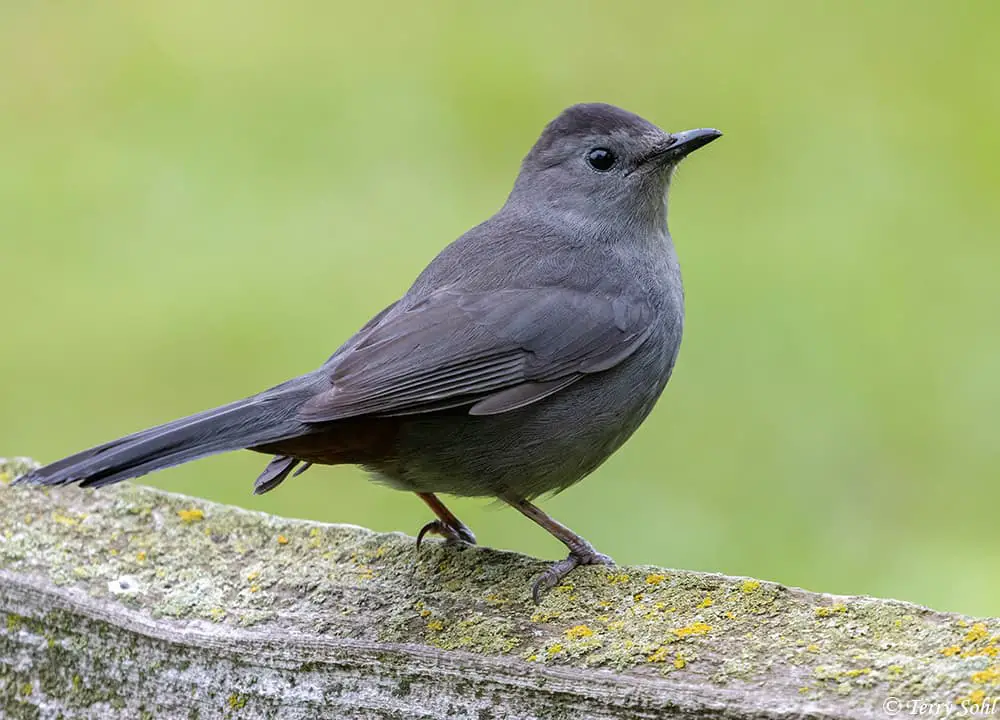
This summer visitor is a medium-sized bird between 8.3 and 9.4 inches long. The breeding range is in the midwest, some parts of the eastern states, and southern Canada.
Gray catbirds have slate-colored bodies, black caps, and reddish tips on their tails. They also make a strange meow like cats.
19. Chipping Sparrow
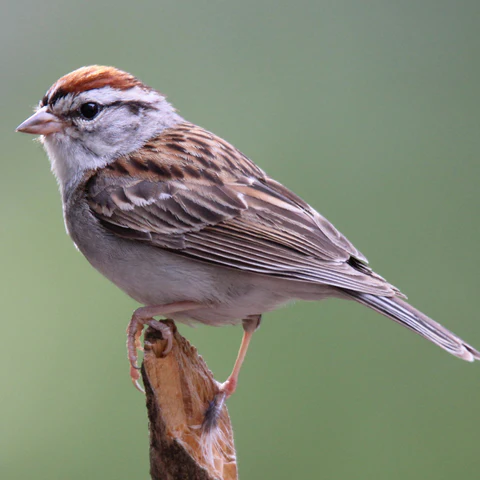
This slender bird has a long tail, a grayish underbelly, and black and brown streaks on its back. It has a more subdued color pattern in winter. To know whether they are chipping sparrows in your backyard, look for birds between 4.7 and 5.9 inches long with the above plumage colors.
The chipping sparrow is a migratory species with breeding grounds in the United States and Canada. It winters in Mexico and Florida, whereas California and Central America host resident populations.
You can attract these avians with sunflower seeds whether you place them in a feeder or scatter them on the ground.
20. Common Yellowthroat
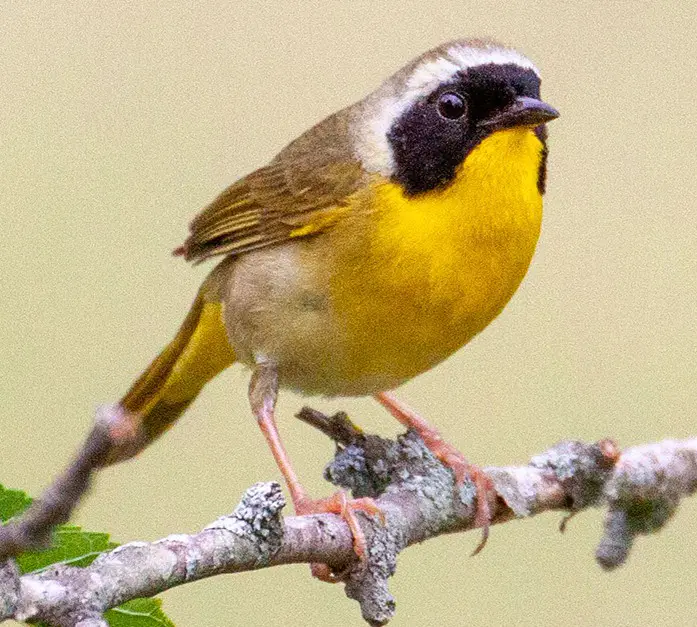
Since it stays in Pennsylvania during the breeding season, you can spot it from around April. The common yellowthroat is a tiny bird between 4.3 and 5.1 inches long, and you will know it by its brownish-black and yellow underside.
The male bird also has a black mask. In the wild, it lives in brushy fields or wetlands; therefore, a backyard with dense vegetation and native trees is more appealing as common yellowthroats eat insects found in such places.
21. Red-winged Blackbird
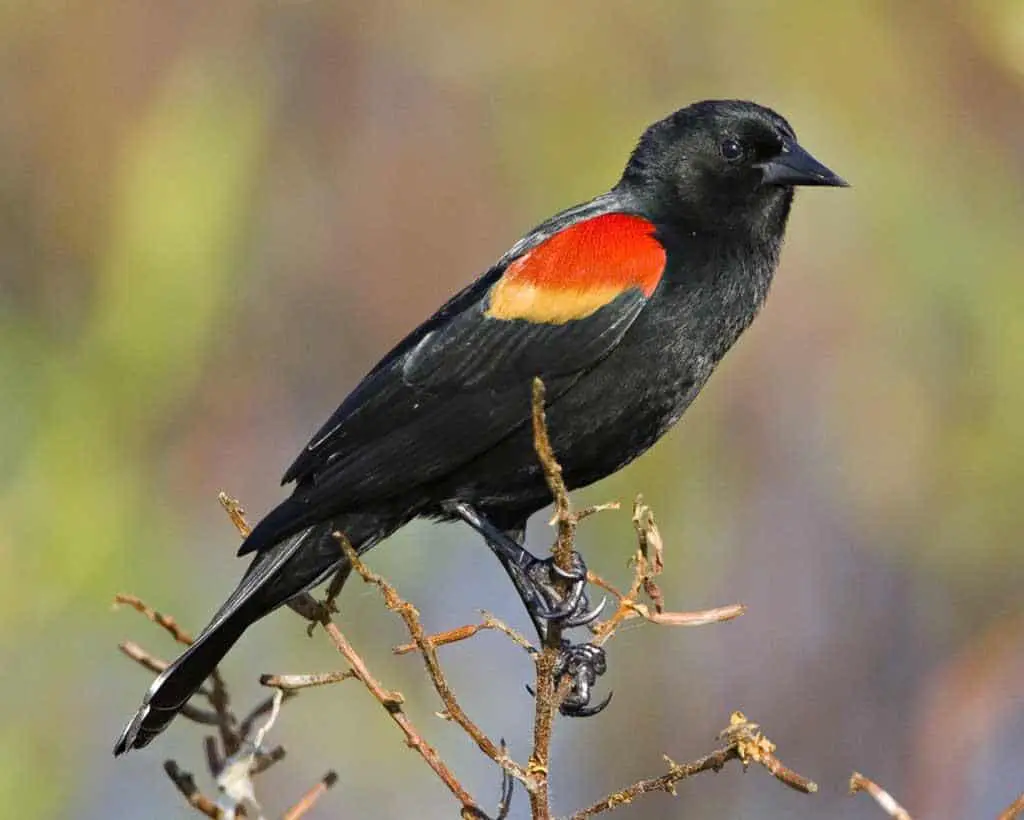
It looks like an American crow but with reddish-orange patches on the shoulder contrasting the dark body. A female red-winged blackbird has brown streaks instead of a black body.
Red-winged blackbirds are smaller than American crows because they measure 6.7 to 9.1 inches long.
These backyard birds of Pennsylvania are common because most U.S. states have a resident population. Canada and other northern regions host breeding birds, while California and parts of the southwestern states are wintering grounds.
22. Common Grackle
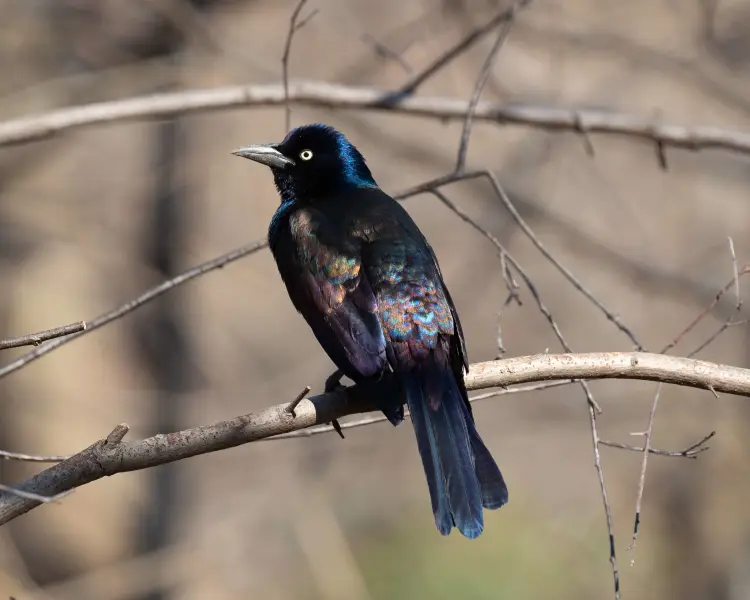
Pennsylvania is within the grackle’s year-round range. A common grackle eats anything it finds, from insects to small mammals, fruits, and corn.
You can tell this blackbird by its 11 to 13-inch body, yellow eyes, and iridescent green to blue feathers. You can attract more common grackles, but remember, they look for food in the garbage.
23. Northern Flicker

Northern flickers are strange avians that prefer digging the ground to hunt insects instead of hammering trees like other woodpeckers. Therefore, if you’d like to see more of this species, install a nest box to attract breeding birds or offer bird seed and berries in winter.
One difference you will note with this species is that birds in the east have yellow tail feathers, but in the west, they have a red flash.
24. European Starling

It is one of the accidental species in the U.S. because the European starling became widespread after its introduction in New York in 1890. From Central Park in New York, starlings grew in number to the point of having a national population that sometimes overtakes native species.
This songbird does not migrate, and it is aggressive and noisy. Foods that keep this invasive species in your backyard are earthworms, fruits like cherries, grains, and seeds.
Its appetite for caterpillars, flies, and beetles might be one of the reasons you’d want to keep more starlings in your backyard as excellent pest and insect control on a budget. Another reason for attracting starlings is their beauty; their black bodies have a stunning green-purple sheen.
25. Red-bellied Woodpecker
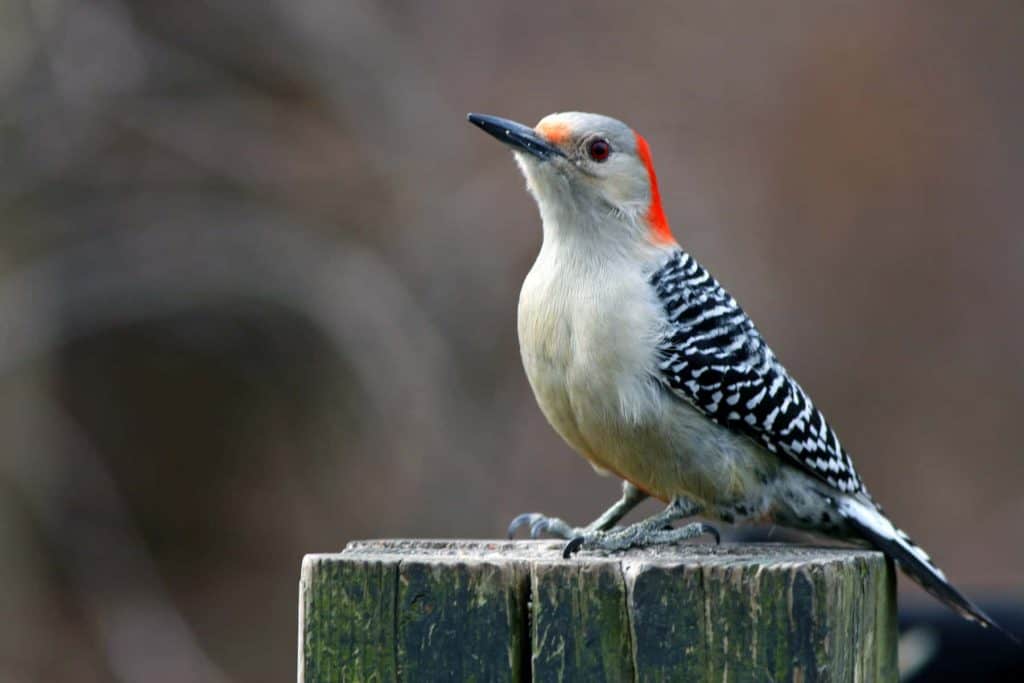
Its name will mislead you if you look for a bird with a red belly because it is a bird with a whitish underbelly, a red crown, and black and white birds on its back.
The female red-bellied woodpeckers have a red nape instead of red feathers that start from the forehead like a male bird. It’s one of the common birds of Pennsylvania as it is a resident species.
Unlike the downy woodpecker, which is about 5 inches long, the red-bellied woodpecker has a body length of 9.4 inches. Its most outstanding feature is its tongue which can stick out about 2 inches beyond the bill as it catches insects hiding in crevices.
26. House Sparrow
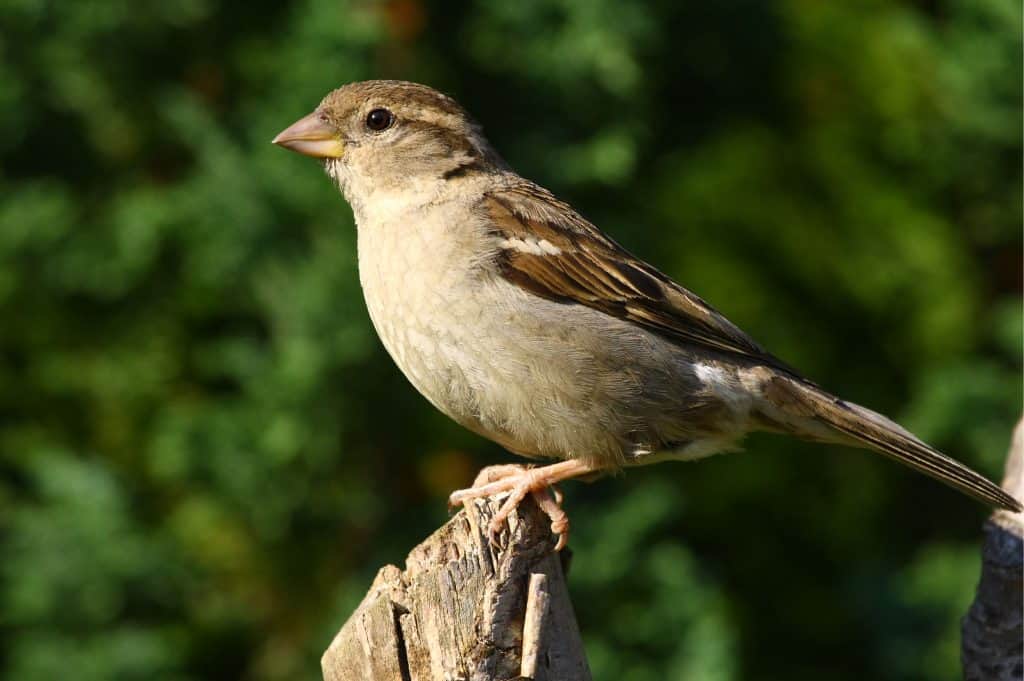
It’s one of the most common birds in Pennsylvania and the rest of North America. Since it’s not migratory, there are sparrows in Pennsylvania throughout the year. The downside is that these birds can be a nuisance as they build nests on your structures.
House sparrows eat grain and seeds. They may also enjoy your leftovers. To know if the birds at your feeder are house sparrows, look for a gray and brown head, gray underbelly, and a black and brown back.
27. Black-capped Chickadee
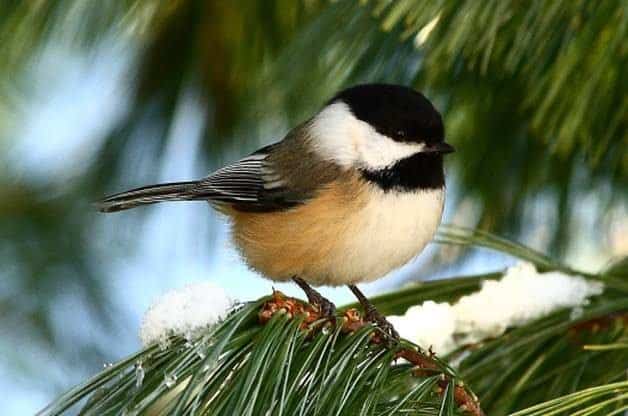
What a lovely tiny bird? Its body, measuring 4.7 to 5.9 inches, has a stunning black cap, a gray back, and a whitish underbelly. The black-capped chickadee is a curious bird that you will see hopping around your yard, wanting to know everything about your property.
It is non-migratory and found in the northern side of the United States and Canada. Seeds, insects, spiders, and suet bring more black-capped chickadees to your backyard.
28. White-breasted Nuthatch
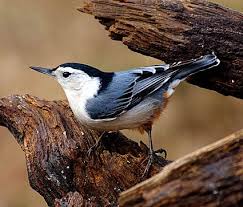
The birds in Pennsylvania are resident avians you can see any time of the year. When bird watching from your deck, specifically hoping to see the white-breasted nuthatches, look for very active tiny birds with gray-blue backs and white bellies. They also have black caps, plus chestnut feathers on the lower bellies.
White-breasted nuthatches are between 5.1 and 5.5 inches long; consequently, you can feed them from a tube feeder.
The tiny body should not fool you because these birds have a trick for cracking nuts and acorns by jamming them into tree barks and hatching them open with their bills. That’s why they are the nut hatches. Other foods they love aside from nuts are sunflower seeds and peanuts.
29. Carolina Wren
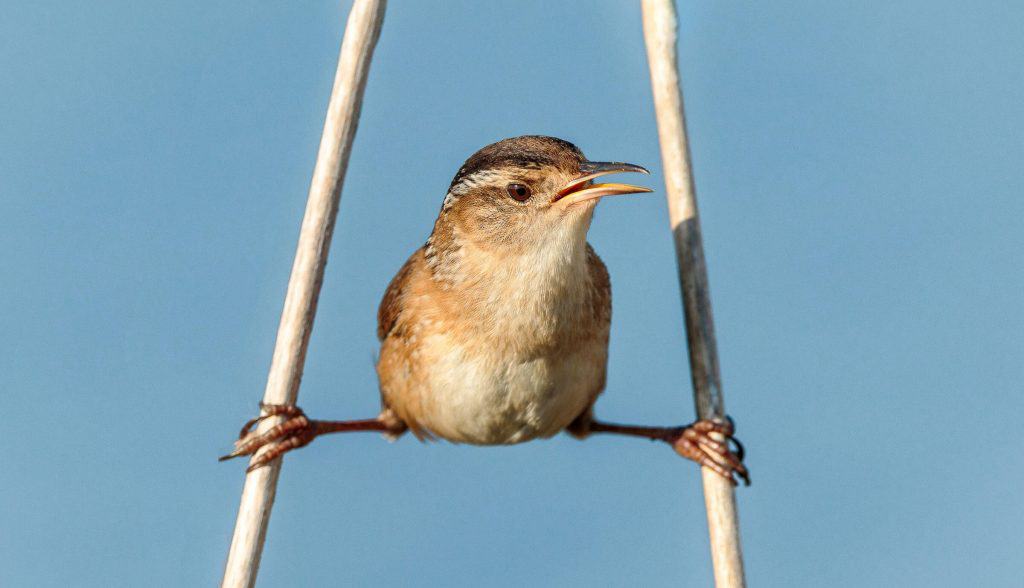
This tiny bird is 4.7 to 5.5 inches long; thus, it is about half the size of an American robin. It is a shy bird, plus the dark brown and light brown plumage does not make it easy to find in the bushes.
Fortunately, the Carolina wren visits backyard feeders to look for suet, hulled sunflower seeds, or peanut hearts, so you can be sure you’ll see it several times from your deck.
30. White-throated Sparrow
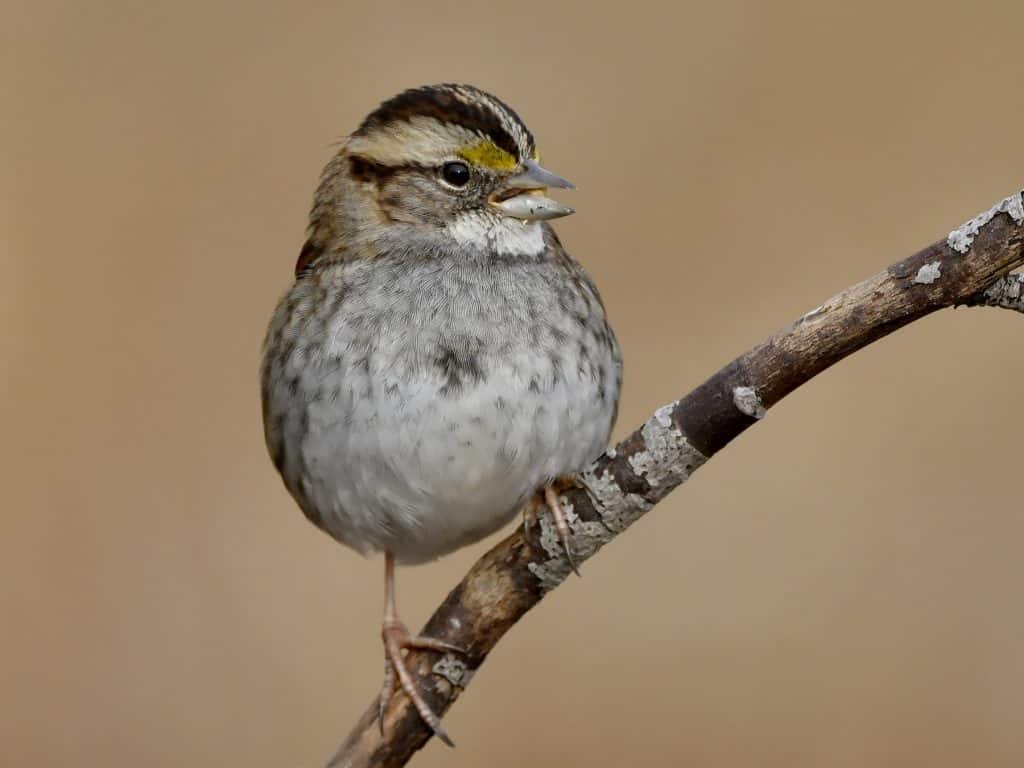
Most sparrows have brown-streaked bodies, but the white-throated one has a white throat, brown back, and a gray underside. It’s a medium-sized bird averaging 6.3 to 7.1 inches long.
This migratory bird breeds in Canada and winters in the eastern and southern states. You can see it in Pennsylvania during wintering months, but if you’d like to see it more often throughout the year, you have to head to northern PA.
To attract more white-throated sparrows to your backyard feeder, offer grass and weed seeds or fruits like grapes, blueberries, and blackberries.
31. American Crow
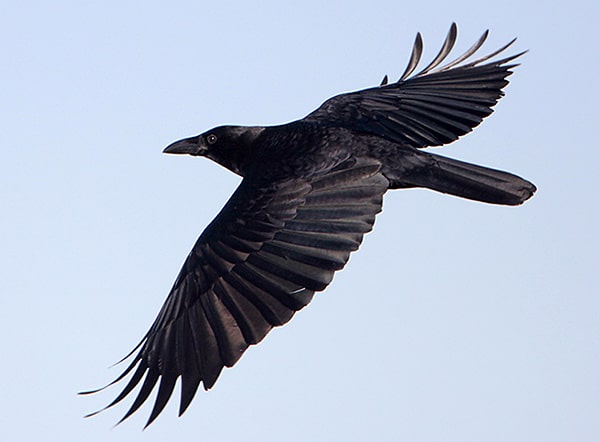
American crows have the same glossy sheen as the red-winged blackbirds, without red-orange shoulder patches. When you look closely, you notice the dark bodies have an iridescent sheen. They are large birds with a body length between 15.8 and 20.9 inches, about twice the size of an American robin.
So you see, they can bully smaller species like European starlings, house sparrows, American robins, and blue jays. They may also worry you because they eat everything from insects to seeds and garbage. Thus, we are talking about a bird that will take over your backyard!
Roaming Tip: Who told you posts like the one you are about to finish couldn’t serve as your virtual bird tour guide? Continue with your birdwatching hobby by proceeding to our next state here — Birds Of Massachusetts.
Watch This!
Now you have a list to check against the species that visit your lawn. Before we let you go and compile the physical characteristics of the species we have discussed, here are some common questions about Pennsylvania birds.
Frequently Asked Questions
What is the rarest bird in Pennsylvania?
The white wing tern is a rare find in this state. The first sighting in 2017 was also the first in North America, as it inhabits parts of Eurasia.
Other rare species confirmed in this state include the mute swan, trumpeter swan, and the American black duck. If you see any of these avians, you are among the luckiest birders in the state.
Are orioles in Pennsylvania?
Yes, there are orioles like the Baltimore and orchard orioles. Both species have a breeding range in the eastern side of North America; hence, you can see them in Pennsylvania. They are colorful birds with yellow plumage, so you cannot miss them near your feeders.
When should I put out my oriole feeder in Pennsylvania?
Put it out toward the end of March or the start of April to feed the first migrants. You want them to see it as they settle on your property.
How many types of birds are in Pennsylvania?
There are 435 species based on a bird tally done in 2020. You’d have to go beyond your backyard to see most of them, as only a fraction visits bird feeders.
Conclusion
Attracting dozens of avians to your backyard is possible in a state with over 400 bird species. Pennsylvania never disappoints, whether you want to see the state bird, the ruffed grouse, or the most common backyard birds in Pennsylvania like the northern cardinal.
First, make your lawn bird-friendly for the specific species you want to attract. That means installing the correct feeder in your bird feeding station, planting trees they love, and getting the right food supplies. Then, wait for avians to find your feeders.

